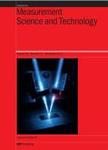版权所有:内蒙古大学图书馆 技术提供:维普资讯• 智图
内蒙古自治区呼和浩特市赛罕区大学西街235号 邮编: 010021

作者机构:Chinese Acad Sci Changchun Observ Natl Astron Observ Changchun 130117 Peoples R China Univ Chinese Acad Sci Shenyang 100049 Peoples R China Chinese Acad Sci Changchun Branch Changchun 130117 Peoples R China
出 版 物:《MEASUREMENT SCIENCE AND TECHNOLOGY》 (测量科学与技术)
年 卷 期:2024年第35卷第4期
页 面:046002-046002页
核心收录:
学科分类:08[工学] 080401[工学-精密仪器及机械] 0804[工学-仪器科学与技术] 081102[工学-检测技术与自动化装置] 0811[工学-控制科学与工程]
基 金:Changchun Institution-Local Cooperation Program National Natural Science Foundation of China [12073052, 11973064] Natural Science Foundation of Jilin Province [20230101006JC] 21SH05
主 题:satellite laser ranging observation task scheduling ant colony optimization algorithm automated ranging system
摘 要:Satellite laser ranging (SLR) is a technology with the highest precision of single measurement of satellite radial distance, which is developing rapidly in the direction of long-distance, high-precision and automation. SLR autonomous observation task scheduling is an important step in realizing station automation, which needs to satisfy the principles of satellite tracking priority and maximization of observation revenue at the same time. In order to improve the automation and intelligence level of SLR system, based on the framework of ant colony optimization (ACO) algorithm, this paper combines the dynamic optimization characteristics of ACO algorithm and the local optimization characteristics of greedy algorithm, introduces the maximum-minimum ant mechanism, and puts forward a scheduling scheme for SLR observation task based on greedy ant colony algorithm (GACA). The results show that compared to the current scheduling methods applied in practice. The results show that compared with the current scheduling method applied in practice, the number of observation satellites obtained from the GACA algorithm-based observation task planning for the SLR system has been improved by 37.4%, the total arc segment of satellite observation with higher priority has been extended by 36.47%, and the total observation gain has been increased by 42.39% in the same period of time. It effectively solves the problems of low efficiency, easy to miss stars and less stars in the observation process in manual scheduling, and provides a simple, practical, efficient and convenient observation task planning scheme for the establishment of an unmanned SLR system.